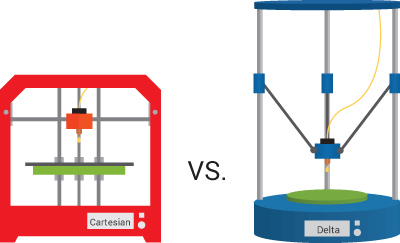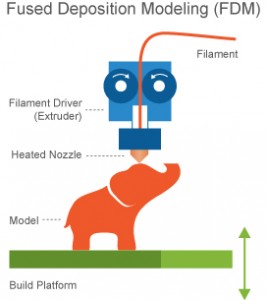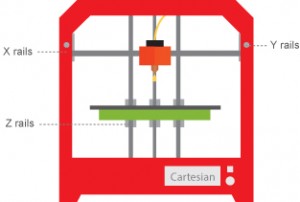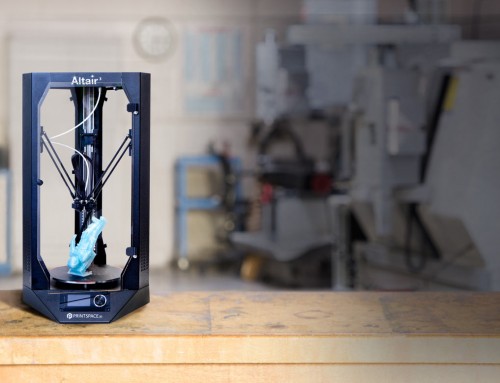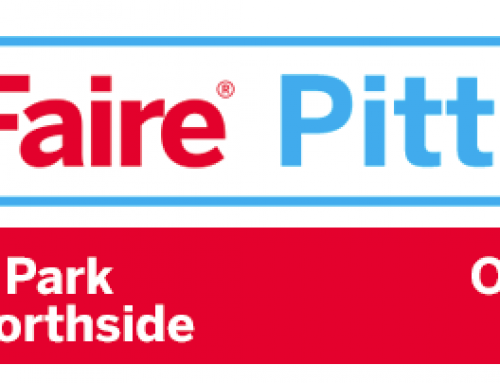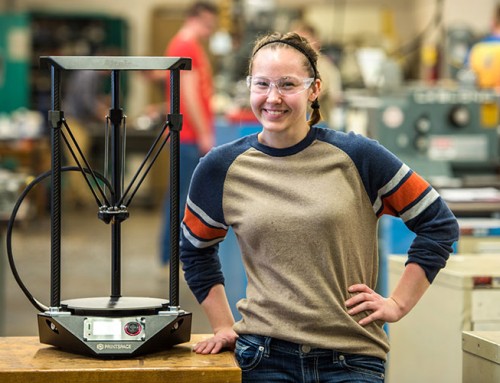Cartesian and Delta style 3D printers are the most common styles of desktop 3D printers currently available. What are the main differences? Well, to understand their unique abilities we need to recap a few technologies.
Let’s briefly review the FDM process. An FDM printer takes a filament of a material (usually plastic) and extrudes it through a print-head-like nozzle. This material is then laid down in thin layers to form a 3D object on a platform, built from the bottom up.
So, how does the print-nozzle get the material in the right location? Well, that is what is unique about the different styles of 3D printers. The FDM technology on these printers is the same, but they have different ways to navigate the print-head in 3D space. In our comparison there are two main methods: Cartesian style printing and the Delta design.
The Cartesian Style FDM Printer
Think back to high school (that is if you aren’t still in high school) and you’ll probably remember Cartesian graphs and coordinates. Those Cartesian graphs let you plot a point in 3D space by using X, Y, and Z coordinates.
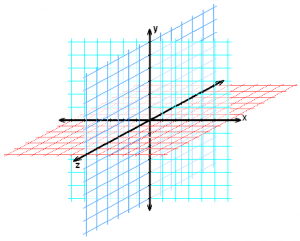
Photo Credit: H Padleckas
The Cartesian printer has three rails that correspond to each of the axes of the Cartesian plane. On each rail there are sliding joints or screws that position the print-nozzle anywhere within the cube volume as specified by your 3D model file.
Controlling a linear Cartesian system like this is mechanically simple and also relatively easy from a software perspective, which is why most 3D printers on the market today use this type of design. The Cartesian coordinate systems has long been used for tools like plotters, CNC milling machines, and 2D printers.
The Delta Style FDM Printer
The Delta style printer uses a very different approach to getting the print-nozzle where it needs to be. There are three runners on long vertical rails, each with an arm connected to the print-nozzle. These arms move up and down independently to the print-nozzle keeping it precisely located throughout the print. Delta printers have the advantage in the ability to make taller objects due to the height of the printer and the tall arms.
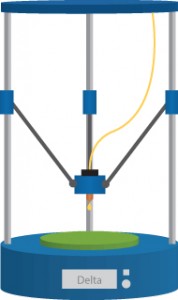
Incidentally, these printers are called Delta Robot printers, because they are actually a type of robot where the tool (or “end-effector”) has simply been changed from something like a grabbing claw or soldering iron to a FDM extruder and print-nozzle. Delta robots were invented in the early 1980s to manipulate small and light objects and are quite versatile.
Rather than using simple Cartesian geometry to calculate where the print-nozzle should go, delta printers estimate the head position using trigonometric functions.
If you haven’t seen a delta printer in action, check our printer Altair. Because of their open design, delta printers are fun to watch and great to use in educational settings.
Other Styles of Printers
We should mention that these aren’t the only desktop 3D printer styles available. There are also SCARA and Polar styles, but they are less common. To learn the basics and get an overview on all four styles, check out our information on desktop printer styles.
